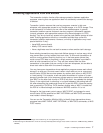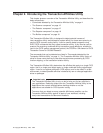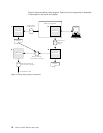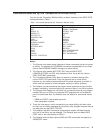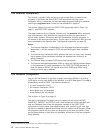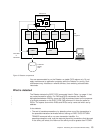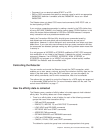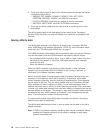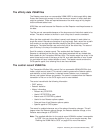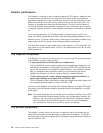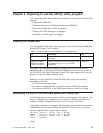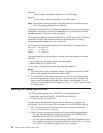v Command is a non-terminal-related START or a DPL
v ENQ or DEQ commands that specify a resource name for which an appropriate
ENQMODEL definition is enabled, and that ENQMODEL has a non—blank
ENQSCOPE
The Detector does not detect CICS macro-level commands, MVS POST calls, or
the hand posting of ECBs.
If you continue a pseudoconversation by setting a transid in the TIOA (rather than
by using RETURN TRANSID), the Detector cannot detect PCONV lifetimes. In this
case, the shortest lifetime detected is LOGON or SIGNON because it interprets
every transaction end as a pseudoconversation end.
Ideally the Transaction Affinities Utility should ignore commands issued by
task-related user exits and global user exits because they are not part of
applications. However, it cannot distinguish such commands from others, and does
detect them. If your user exits use commands that can cause transaction affinities,
the commands are detected, perhaps making any affinity problem seem worse than
it actually is.
If an exit program at XICEREQ or XTSEREQ modifies the EXEC CICS command,
that modification is not visible to the Detector. (It detects the original, unmodified
command.) However, if an XICEREQ, XICEREQC, XEIIN, XTSEREQ, or
XTSEREQC exit program (or an XEIOUT exit program invoked earlier) modifies
EIBRESP, the Detector sees the modified value.
Controlling the Detector
You can monitor and control the Detector through the CAFF transaction, which
enables you to start, pause, continue, and stop the collection of affinity data into the
tables in the data space. Using the CAFF transaction, you can also specify for
which affinity commands, and for which transactions, data is to be collected.
The options that you specify to control the Detector for a CICS region are preserved
in a recoverable VSAM control file. For more information about this file, see “The
control record VSAM file” on page 17.
How the affinity data is collected
The Detector uses a number of affinity tables in the data space to hold collected
affinity data. The affinity tables are in three categories:
1. There is an affinity table, or set of tables, for each of the following command
groups that cause inter-transaction affinity:
v ENQ and DEQ commands
v READQ TS, WRITEQ TS, and DELETEQ TS commands
v LOAD HOLD and RELEASE commands
v RETRIEVE WAIT and START commands
v ADDRESS CWA commands
v GETMAIN SHARED and FREEMAIN commands
v LOAD and FREEMAIN commands
v CANCEL, DELAY, POST, and START commands
The tables for a particular group have a structure appropriate to that group.
Chapter 2. Introducing the Transaction Affinities Utility 15
|
|
|
|



